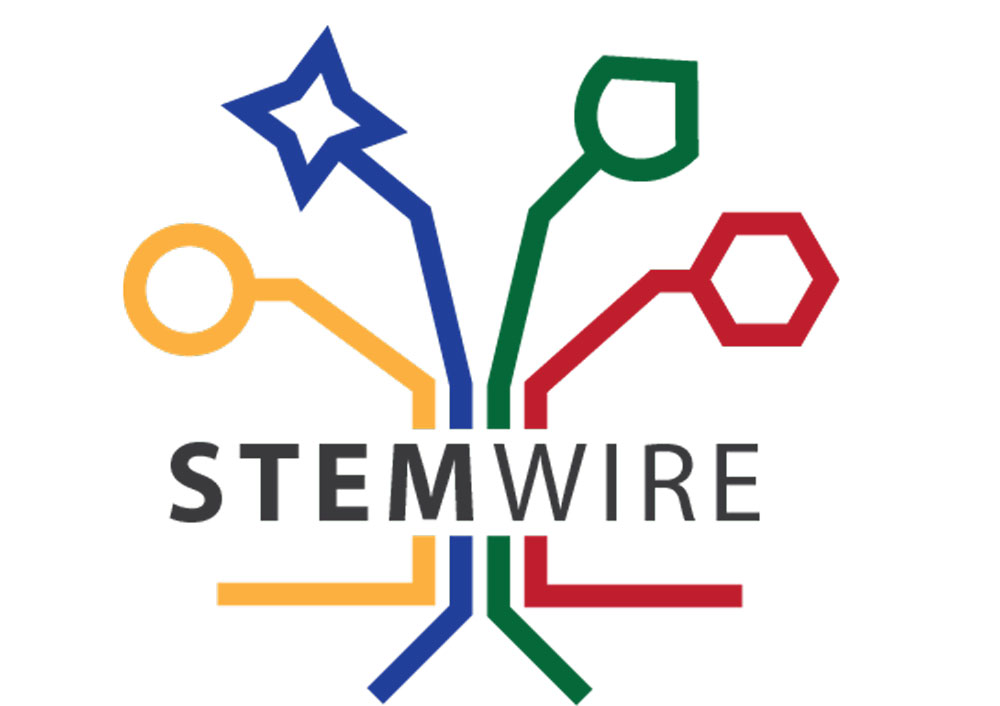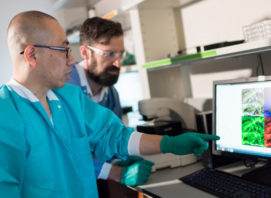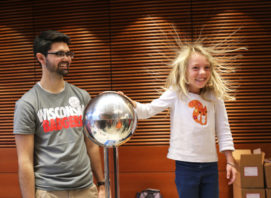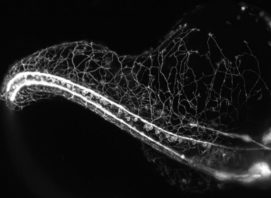Unlocking potential: the bridge between autism and STEM
In the wake of the push for more STEM-educated individuals to fill a growing job market, researchers have recognized an untapped talent source.
A study published in November 2012 in the “Journal of Autism and Developmental Disorders” found that people with an autism spectrum disorder (ASD) are drawn to STEM fields more often than the general population or people with different disabilities. It also showed that individuals with autism are one of the least likely to complete postsecondary education compared to those groups.
Xin Wei, a senior research analyst in SRI International’s Center for Education and Human Services and the lead author on the study, said those with autism tend to have “strengths in systemizing, memorizing, and rule-based systems, but they are not so great at social and emotional interaction with other people.”
So while the strengths of those with autism tie in well to STEM-related skills, the difficulties with social interactions make it hard to navigate a traditional college environment.
“High schools and [early educators] could include them more in general education, give them more opportunities and encourage their self-determination skills to be independent, be the leader and be the champion of themselves,” Wei said. “Those things can make a difference.”
Some groups are taking steps to help advance special education, and these opportunities for students with autism begin at an early age. A few efforts are detailed below.
1. ROBOTIC TECHNOLOGIES
As robotic technologies have grown and improved over the years, some people are considering how these advancements might be utilized as an educational resource in classrooms.
Amelia Moody, a researcher at UNC-Wilmington with a background in special education, introduced a robot teacher, known as the NAO robot, to children with autism as part of an exploratory study. The robots were purchased about five years ago as part of a private foundation grant. The robot could be given commands and participate in activities with children, like the game “Simon Says,” which requires children to actively listen and follow directions.
“It was an opportunity for [the children] to have to use language skills and be patient when technology doesn’t always work,” Moody said, “which are some challenges of kids with autism.”
The study measured engagement and language skills of the elementary students, who range in age from five to 12. This included concepts like level of participation, whether they interacted verbally or nonverbally, and whether comments made were appropriate to the task at hand.
Moody said the children were very engaged with the robots, responded positively overall and became attached to these robot teachers. Recently Moody has used the NAO robots as part of a STEM education workshop geared toward helping science teachers and special education teachers co-teach kids with autism.
Dennis Kubasko, director of the Center for Education in STEM at UNC-W, taught the workshop in collaboration with Moody. Kubasko said most of the work they do with children with autism is very hands-on and fosters an environment of creative learning.
“They think robots are the coolest things,” Kubasko said, “and the autism specialist that we work with will argue that there’s a lot of social reasons that they like to work with robots.”
Moody said there are both low-tech and high-tech options to adapt learning for students with autism, the NAO robots being on the more high-tech, expensive end. Even just drawing on pen and paper could be a good way to visualize learning on the low-tech end.
“With a higher technology like [the NAO robot], just the programming ability and the human-like characteristics are something you won’t get from other less expensive items,” Moody said. “However, can you teach other things with less expensive tools? I think the answer to that is yes as well.”
2. iPAD APPS
Mark Coppin, the director of assistive technology at the Anne Carlsen Center in North Dakota, developed a wheel diagram featuring iPad applications helpful for students with Autism Spectrum Disorders. The apps are categorized by common learning characteristics, such as behavior or social skills, to act as a resource for students to engage in their learning environments effectively.
While most of the apps are meant to contribute to a general success in learning, some of the games foster more specific STEM skills as well, like Math Bingo or the puzzle and patterns games offered through Injini.
3. COMMON CORE ACADEMIES
Discovery Education offers professional development opportunities for teachers, and more recently, opportunities structured around the Common Core State Standards (CCSS), which relate to mathematics and language arts. The Common Core Academies offer several sessions, including one geared toward special education teachers.
Karen Beerer, vice president of professional development for CCSS at Discovery Education, said the CCSS apply to all students. They need to figure out how teachers can implement the strategies needed to support special education students.
“In the special education world we talk about providing students with accommodations versus modifications,” Beerer said. “We talk about those two terms; what does that mean in a Common Core world?”
Beerer said digital technologies can be instrumental in the special education classroom and let teachers provide more personalized instruction.
“One of those strategies is working through old philosophies and working toward a new era… but the bar is raised,” Beerer said.
4. AccessSTEM COLLABORATION
AccessSTEM, a group lead by the University of Washington’s DO-IT Center, works to increase the involvement of people with learning or physical disabilities in STEM careers. Partners in these efforts include stakeholders like disability services, STEM industries and postsecondary institutions
AccessSTEM offers resources to K-12 and postsecondary educators, as well as employers, to make STEM opportunities more accessible to students with disabilities. These resources include a Knowledge Base, funded by the National Science Foundation, that contains more than 500 research articles on educational research and best practices.



